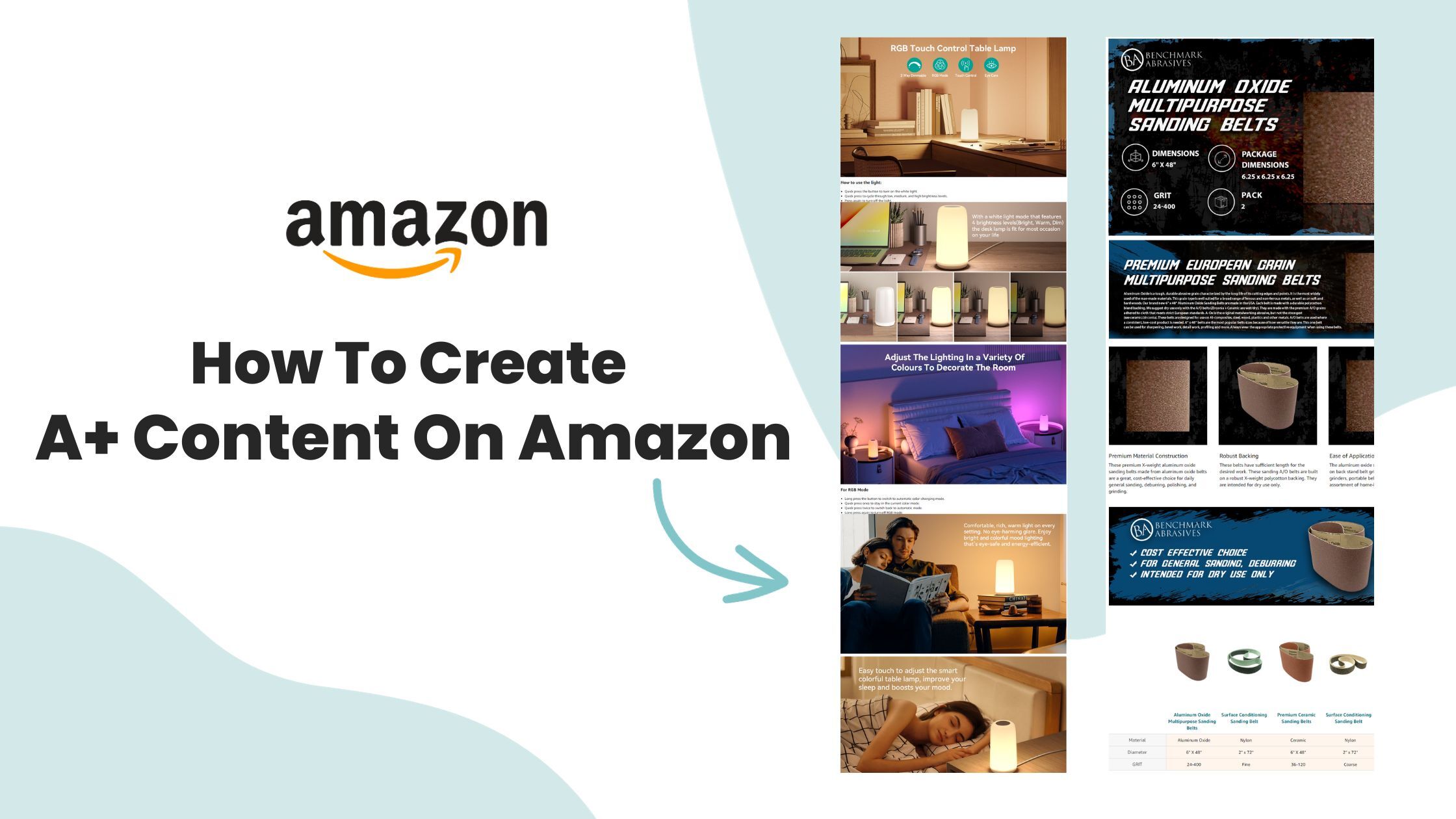If you’re selling on Amazon in 2025, simply having a product listing isn’t enough. Shoppers are flooded with similar options — and they decide in seconds whether your product feels “premium” or not.
That’s where Amazon A+ Content comes in.
It’s your chance to visually tell your brand story, highlight key benefits, and build credibility beyond standard text and images.
A+ Content can increase sales by up to 20%, boost brand recognition, and reduce return rates. In this blog, we’ll explore how to write, design, and optimize A+ Content to make your listings stand out and convert.
1. What is Amazon A+ Content?
Amazon A+ Content (previously called Enhanced Brand Content) allows brand-registered sellers to add:
- Custom images
- Comparison charts
- Feature modules
- Text overlays
- Brand storytelling sections
Instead of plain text, your listing becomes a mini landing page that visually communicates your value.
You can use A+ Content for:
- Explaining product benefits
- Comparing models or variations
- Showing your brand story and values
- Building emotional trust through visuals
2. Why A+ Content Matters for Conversion
Most shoppers skim through titles and bullet points but spend more time on visuals.
A+ Content helps in:
- Building emotional trust through storytelling
- Answering product questions visually (reducing customer doubt)
- Encouraging brand loyalty — customers remember your visual tone
- Improving SEO within Amazon (via backend text and relevance)
Amazon’s data shows that A+ Content can increase sales by 5–20%, especially for premium or lifestyle products.
3. Structure of High-Performing A+ Content
Here’s the ideal structure of an A+ Content layout:
1. Brand Story Section:
Start with who you are — your mission, values, and what makes you different.
Include lifestyle imagery that connects emotionally with your audience.
2. Product Feature Highlights:
Use 3–5 high-quality banners that clearly show the main product benefits.
Example: “Lightweight | Durable | Eco-Friendly | Travel-Ready”
3. Visual Comparison Chart:
Compare your product vs others or different versions (e.g., size or color options).
4. Lifestyle and Usage Imagery:
Show real-life use cases (people using your product).
5. FAQ or Key Benefits Recap:
Answer the most common customer questions visually.
4. Writing Compelling A+ Text
Your A+ text should complement the visuals — not repeat what’s already in your title or bullets.
Here’s how to write it effectively:
- Short, punchy sentences (Amazon shoppers skim)
- Focus on benefits, not specs
- Use active language — e.g., “Experience comfort” instead of “Comfort is provided”
- Align with brand tone (friendly, premium, eco, sporty, etc.)
Example (for an eco-friendly brand):
At GreenHydro, we believe hydration shouldn’t harm the planet. That’s why every bottle we make is BPA-free, reusable, and built to last a lifetime. Stay hydrated — sustainably.
Example (for a fitness brand):
Built for champions — our training gear helps you push harder, recover faster, and stay ahead of the game. Every stitch, every fabric, made for performance.
5. Visual Storytelling Tips
The visuals are the heart of your A+ content.
Follow these tips to make them powerful:
✅ Use consistent color palettes (match your brand theme)
✅ Keep text overlays short (2–6 words max per image)
✅ Use real lifestyle photos — not stock images
✅ Include infographics for complex features
✅ Maintain balanced whitespace for a premium look
Pro tip: Use a design grid and font hierarchy (headings, subtext, and icons) to maintain a professional flow.
6. Common A+ Modules and How to Use Them
Amazon provides multiple layout modules. Here’s how to use them effectively:
| Module Type | Best For | Tip |
|---|---|---|
| Standard Image with Text | Highlighting key features | Keep text to 3 lines max |
| Four Image & Text Module | Show 4 benefits visually | Add icons for quick reading |
| Comparison Chart | Compare versions or brands | Use clear product photos |
| Banner Image | Emotional storytelling | Use real-life settings |
| Image Carousel | Product detail showcase | Highlight textures or accessories |
Combining 4–5 modules strategically can help create a visually rich, storytelling-driven layout.
7. Optimize Your A+ Content for SEO
While A+ content doesn’t directly affect Amazon keyword rankings, it indirectly helps SEO through improved engagement and lower bounce rates.
Tips for SEO-friendly A+ content:
- Use keywords in text sections naturally (not overstuffed)
- Add keyword-rich alt text in images (Amazon’s backend feature)
- Keep headings descriptive, e.g., “Premium Stainless Steel Bottle – Leakproof & Reusable”
- Align A+ tone with your main listing keywords
8. Leverage A+ Brand Story (Above the Fold)
Amazon recently introduced the Brand Story section that appears right above A+ content.
Use it to:
- Introduce your brand visually
- Highlight key differentiators
- Include a carousel of lifestyle banners
Example structure:
- Image 1: “Our Mission”
- Image 2: “Our Materials”
- Image 3: “Our Promise to You”
This helps you connect emotionally before customers even reach your product details.
9. Test and Analyze A+ Performance
Use Amazon Brand Analytics to measure A+ content performance:
- Click-through rate (CTR)
- Conversion rate (CVR)
- Time on page
Experiment with:
- Different hero images
- Benefit sequences
- Tone of storytelling
The best-performing A+ pages are always tested, not just designed once.
Conclusion
In today’s Amazon marketplace, A+ Content is more than just a design upgrade — it’s a trust-building tool.
It gives your brand a voice, turns your listing into a digital showroom, and connects emotionally with buyers.
When done right, A+ Content:
- Differentiates your brand
- Builds lasting trust
- Increases conversions and sales
So, invest in quality visuals, persuasive text, and consistent branding.
Your A+ content should tell your story — not just show your product.
Because on Amazon, shoppers don’t just buy products anymore — they buy brands they believe in.


